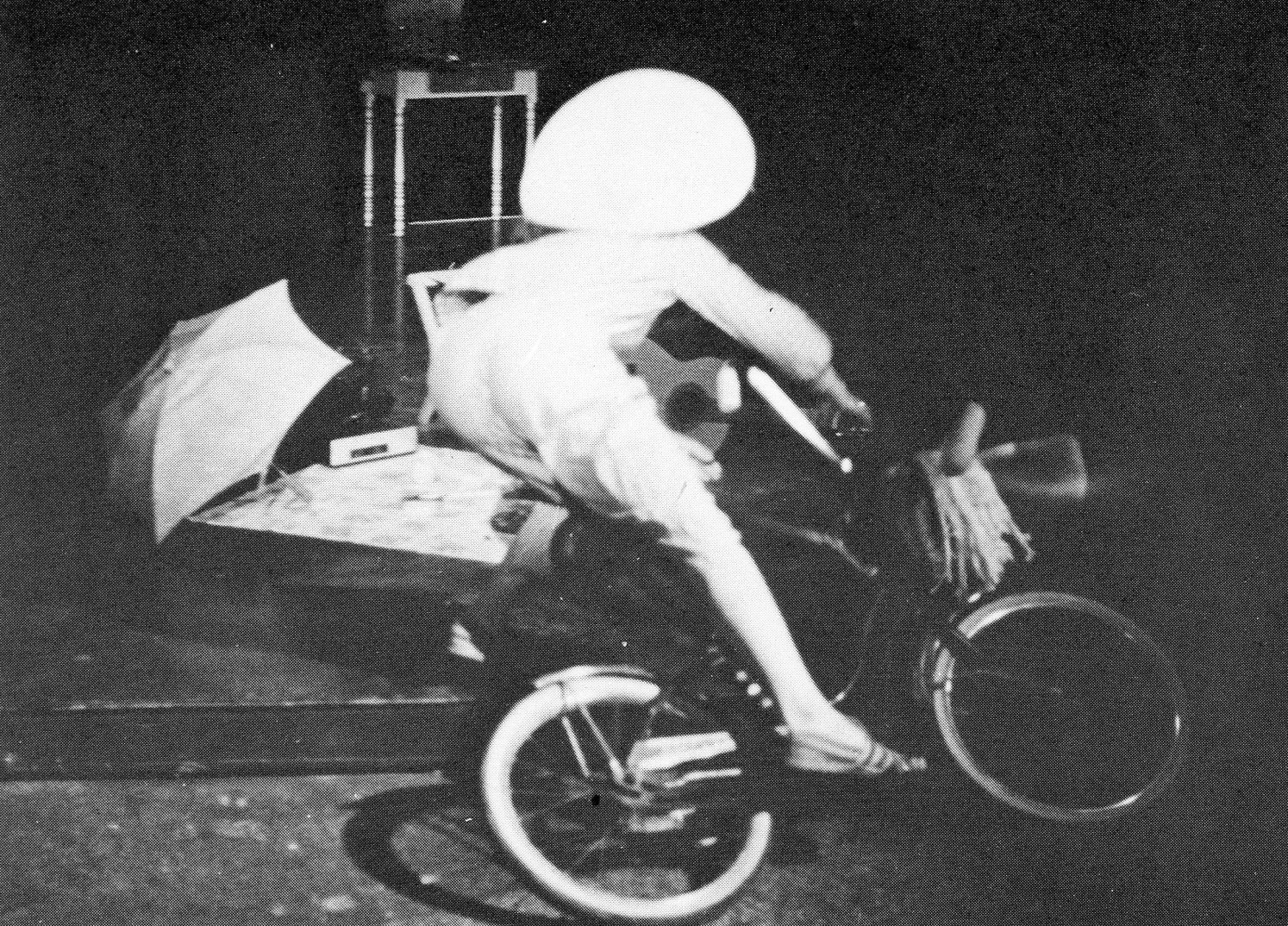The Tears, the Falling of Bas Jan Ader
His name wafted through my consciousness long ago, but this was the first I’d encountered the work—actually the face—of the artist Bas Jan Ader. It is an anguished face, framed close on a b/w video monitor in a gallery at the Pomona College Museum of Art . The exhibition is part of "It Happened at Pomona: Art on the Edge of Los Angeles," and also part of Pacific Standard Time, which looks at So Cal art 1945-1985. Bas Jan Ader taught at Claremont Graduate School in the early seventies; before he disappeared.
Bas Jan Ader is crying. A tear slides down his cheek, leaked from closed eyes. There is no sound. Over the artist’s lean handsome features wash dark private emotions. He makes no attempt to hide them, to hide from us. The title of this 1971 piece is succinct: “I’m Too Sad to Tell You.” His right hand troubles his brow, his lips part to gasp some air. Bared teeth threaten a grin but mutate into a grimace, then a sob. Another tear escapes from eye to cheek, lips, chin. There is a moving purity to his gesture, a moment in this 3 minutes, 34 seconds of tears without explanation.I first heard about Bas Jan Ader from my husband Lloyd, who took over Ader’s classes in the art department at UC Irvine in the fall of 1975, when the artist failed to show up to teach several weeks into the quarter. It had been two months since Bas Jan had departed Cape Cod for Falmouth, England in a twelve and a half foot sail boat, an endeavor he called “In Search of the Miraculous.” Though Bas Jan Ader’s boat washed up on the coast of Ireland six months later, it still took several years-- according to one source-- before it was finally accepted that his disappearance was not a work of art, not a prank, that Bas Jan Ader was in fact, gone. He was thirty-three when he vanished.
I started reading about Bas Jan Ader’s work that night in the thick Pomona College exhibition catalogue, and then on-line. I ordered a documentary about his life; it hasn’t arrived yet. I learned how he was fascinated by gravity, by falling. I learned that his parents were both ministers in the Dutch Reformed Church, that his father was executed by the Nazis in 1942 for harboring refugee Jews. Bas Jan was only two at the time.Near Ader’s crying video, on the facing wall of the gallery was a large photo diptych featuring Bas Jan as sole performer. In one, he is standing alone in a wooded thicket, his body is dwarfed by the enormous pines. In the second, Bas Jan is barely visible, prostrate at the foot of those huge trees. What happened between the two images? Has he fallen? Did he simply lie down? Is this a call-out to his father’s execution?
On the artist’s posthumous website, you can see most of his small but influential oeuvre. Several pieces explore the artist’s relationship to gravity. Those were the days when artists like Chris Burden wanted to know what would happen if you shot yourself. Bas Jan wanted to know what happened when you fall, often from a great height.In one video, he dangles from the branches of a tree, his long skinny body suspended in mid-air. He literally wriggles out onto a limb until the inevitable happens, his weight unsupported, he falls into a stream.
Another piece, “Fall I,” is more dramatic, opening with Bas Jan seated in an armchair on the peaked roof of his house. He inclines the chair slightly, launching the fall… he rolls down the roof over the eaves and falls a good fifteen feet. In another video, he rides his bicycle right over the edge of an embankment into an Amsterdam canal. He didn’t emerge unscathed from these experiments, but they must have given him some knowledge he was seeking.
As a dancer and theater practitioner, gravity was a focus, a teacher for me. When I crashed into the stage set in my theater piece, “Lents Passage,” I thought of it as falling into another world. I remember one night in the studio, I did a spectacular upside-down jump and my friend caught me just before my head hit the ground. I was so elated with this particular move, I tried it again, but neglected to signal my partner. He recalls seeing me jump onto my head, quite without notice. Fully expecting him to catch me, I never stiffened up before I struck the ground. The less you know you’re going to fall, I concluded, the more you know about falling.
There is terror in falling, especially as you get old. There is also hilarity in falling, witness Buster Keaton. There is beauty in falling, like the only time I fainted, on a winter morning in small town in Wales. I relished the exquisite slow spiral down to the cold concrete. Bas Jan knew he was going to fall off the roof of his house, off the tree limb, into the canal. He surrendered to gravity. The director of that documentary about him suggests that Bas Jan Ader’s strategy was to “use gravity as a temporary relief from the everyday world.” There is no virtuality in falling: the body hits the water, bone strikes ground, impact sends shock waves through vessels, muscles and nerves. Falling is humbling. Crying is humbling. Falling is relief. Crying is relief. Bas Jan Ader falls with intention and cries without shame.

